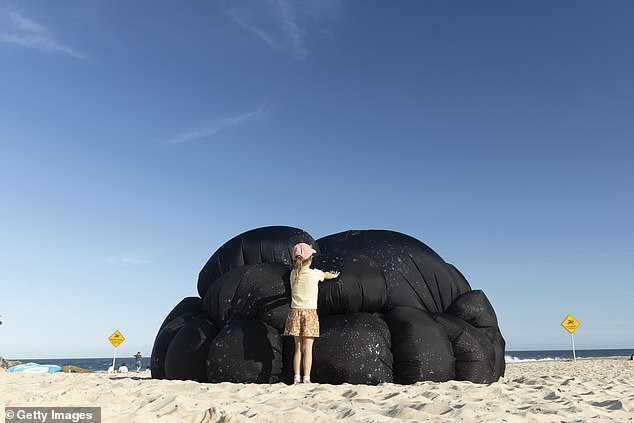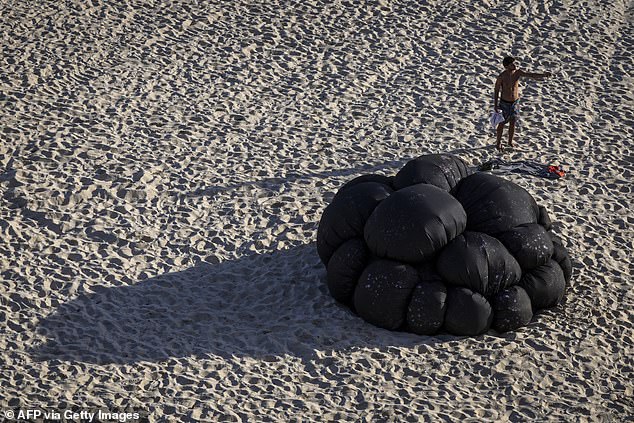A giant black sculpture resembling a common skin cancer has appeared on Sydney’s Tamarama Beach as part of the annual Sculpture by the Sea exhibition.
Sydney-based artist Andrew Hankin, creator of the piece, explained that the sculpture was designed to look like a melanoma and is made of durable fabric.
“It’s a really big topic, and I think in the sense of bigness, we wanted to go out and create something that hadn’t been done before in terms of scale,” he said. The guardian.
“It’s going to have a message that will be hard to ignore this summer.”
As the exhibition progresses, the sculpture, which currently measures three meters high and 20 meters wide, will change size, shape and color to raise awareness of skin cancer.
Australia and New Zealand have the highest rates of melanoma in the world, with two in three people diagnosed with some form of melanoma before the age of 70, according to figures from the Australian Cancer Council.
While anyone can develop melanoma, risk factors include a history of tanning and sunburns in childhood, fair or freckled skin, and a family history of the disease.
To raise awareness, Skin Check Champions will be conducting free skin checks on October 26 and 27 at the sculpture site.
A giant black sculpture resembling a common skin cancer has appeared on Sydney’s Tamarama Beach as part of the annual Sculpture by the Sea exhibition.

Sydney-based artist Andrew Hankin, creator of the piece, explained that the sculpture was designed to look like a melanoma and is made of durable fabric.
Scott Maggs, who founded the organization after losing his best friend to melanoma, said it was crucial Australians were aware of the dangers of the disease.
‘More than 60 percent of skin cancers are identified by the people who suffered them. It’s a really important thing for every Australian to learn, to be aware of changes and developments.’
Now in its 26th year, Sculpture by the Sea is expected to attract thousands of visitors to its annual exhibition, which began today.
The event will run until early November and will showcase sculptures along the Bondi to Tamarama coastal walk.


